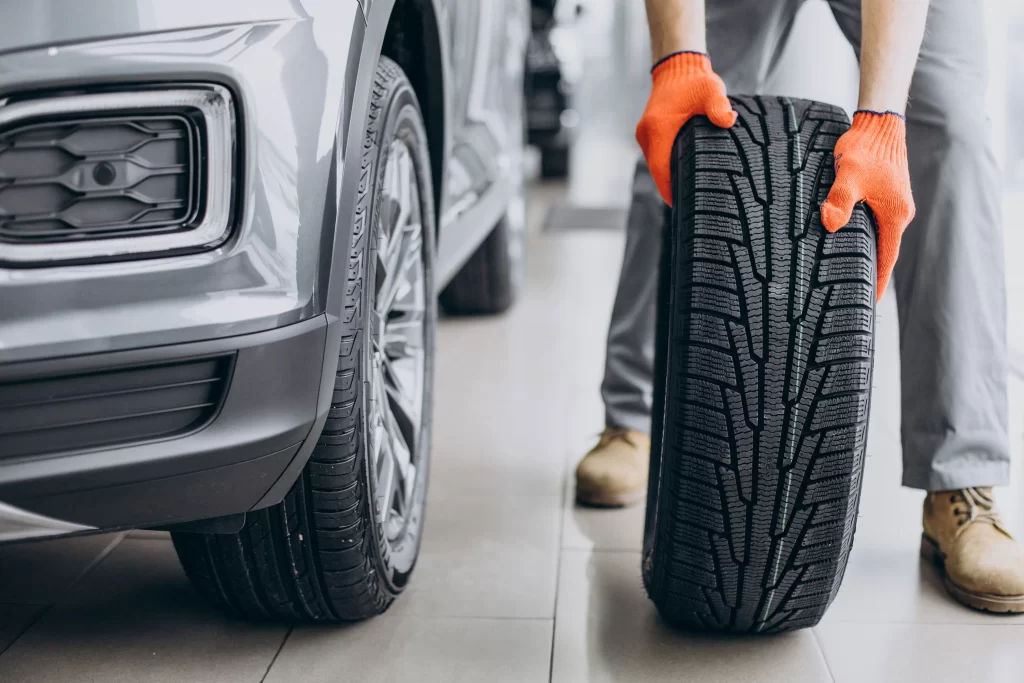How to Choose the Right Tires for Your Vehicle

When shopping for tires, there’s more to consider than just finding some that fit and slapping them on your car. You need to keep in mind your driving needs, where you live and drive often, and the weather conditions.
Your tires are responsible for traction and safety, and should also provide a comfortable ride and good fuel economy. It’s easy to get overwhelmed by all the different tire options.
All-Season Tires
All-season tires are the most commonly factory-installed type, and they offer a balance of quietness, smoothness, fuel efficiency and traction. Other types of tires focus on one aspect, but all-season tires are a good choice for most drivers if you’re looking for solid, general-use tires.
Look for symmetrical tread patterns that distribute wear evenly, so your tires last longer and keep you safe. You’ll also want to consider your typical climate conditions. If you live in a climate with heavy summer rains or snow, it’s worth investing in dedicated summer and winter tires.
If you only need to replace one tire that has been damaged or worn down, match the size, brand and line of your original tires if possible. It’s also important to select a tire with a speed rating that matches your car’s. Consult your owner’s manual or the placard on the driver’s door jamb to find the appropriate specifications for your vehicle.
Winter Tires
The snowy, icy roads that come with winter weather require tires that are designed to grip those surfaces. All-season tires can provide some level of traction, but you’ll get much better performance with dedicated winter tires. Look for the three mountain peaks and snowflake symbol on the sidewalls to identify winter tires.
While a vehicle’s 4-wheel drive or stability control systems help with acceleration and turning maneuvers, they can do very little to prevent sliding when the road is covered in snow or ice. Choosing the right winter tires will give your car optimal traction during those conditions, regardless of whether you’re driving an SUV or sedan.
When selecting winter tires, it’s best to stay as close as possible in size to the summer or all-season tires that were originally on your vehicle. Running different tire sizes on your vehicle can cause issues with traction and even throw off the reading on your speedometer.
All-Terrain Tires
If you drive your truck or SUV off-pavement and want to take advantage of the vehicle’s off-road capabilities, an all-terrain tire is a great option. These tires offer excellent traction on dirt roads, sand, mud and snow. They’re also a great choice for drivers looking for a mix of highway and off-road handling.
Before you replace your tires, make sure you check the tire’s load index and speed rating. This will ensure the new tires match your vehicle’s original specifications and won’t negatively impact your ride’s performance attributes.
Where you live and the climate you face are also important factors when choosing a tire type. For example, if you drive primarily in dry climates, you may not need tires that have good wet weather traction. But, if you drive in climates where there’s a lot of rain, a set of M+S (Mud and Snow) rated tires is a good idea. This will help keep your vehicle’s traction and handling characteristics in top shape year-round.
Off-Road Tires
The right tires can make or break your ability to handle off-road situations. If you frequently drive on a mix of rough terrain and paved roads, then an all-terrain tire is a great choice. These tires have a larger tread designed to grip mud, gravel, rocks, and snow, while still providing a comfortable highway ride. Some people even choose a specialized mud-terrain tire, which features more aggressive tread blocks and cleats that grab muddy or sandy conditions.
Some off-road enthusiasts opt for directional tires that have specific patterns to grip various terrains more effectively, however they may be loud on the road. Other off-roaders opt for tires with “cleats” off the edges, which can also improve grip but are often noisy on paved surfaces. The tire compound is also a key factor. A softer compound maximizes off-road performance but wears faster, while harder compounds provide increased durability for extended highway driving. Fleet managers should consult with their dealer and manufacturer field service reps to determine the best balance of performance criteria based on how the vehicle will be used.




